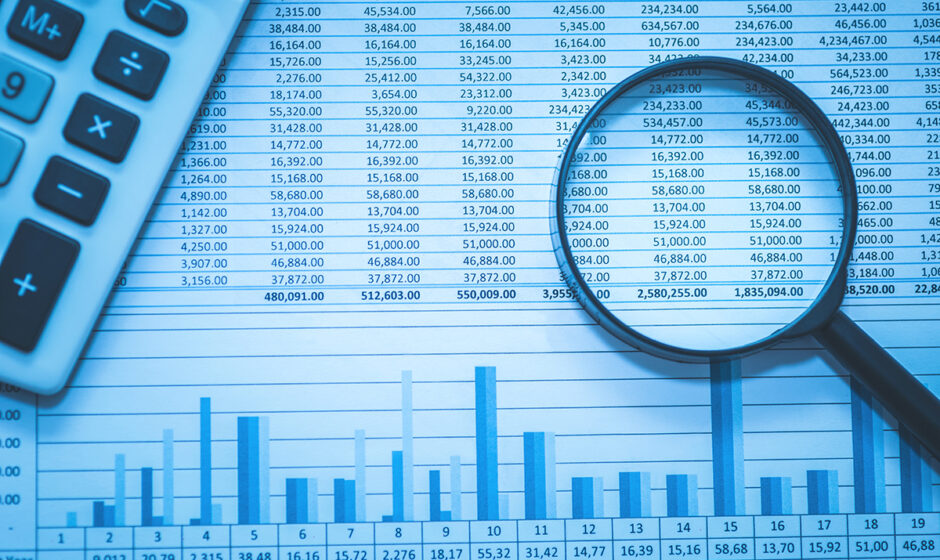In today’s complex business environment, fraud has become a pervasive threat, costing organizations billions of dollars annually and eroding trust in institutions. From embezzlement to financial statement manipulation, fraud can take many forms, often hiding in plain sight. This is where forensic auditing steps in—a specialized field that combines accounting expertise, investigative skills, and legal knowledge to uncover fraudulent activities. Unlike traditional audits, which focus on compliance and accuracy, forensic audits are designed to detect and investigate fraud, often leading to legal action.
In this guide, we’ll walk you through the step-by-step process of fraud detection using forensic auditing. Whether you’re a business owner, auditor, or simply curious about how fraud is uncovered, this blog will provide you with a clear roadmap to understanding and applying forensic auditing techniques.
What is Forensic Auditing?
Forensic auditing is the process of examining financial records, transactions, and other evidence to detect fraud, embezzlement, or other financial misconduct. It goes beyond the scope of a standard audit by focusing on identifying irregularities, gathering evidence, and often preparing for legal proceedings. Forensic auditors are like financial detectives—they dig deep into the data, follow the money trail, and piece together the puzzle of fraudulent activity.
The importance of forensic auditing cannot be overstated. According to the Association of Certified Fraud Examiners (ACFE), organizations lose an estimated 5% of their annual revenue to fraud. Forensic auditing not only helps recover losses but also deters future fraud by strengthening internal controls and fostering a culture of accountability.
Step-by-Step Guide to Fraud Detection Through Forensic Auditing
Step 1: Understanding the Basics of Forensic Auditing
Before diving into the process, it’s essential to grasp what sets forensic auditing apart. While traditional audits verify the accuracy of financial statements, forensic audits are reactive—they’re triggered by suspicions of fraud or irregularities. Forensic auditors must possess a unique skill set, including:
- Accounting knowledge: To understand financial records and transactions.
- Investigative skills: To follow leads and uncover hidden fraud.
- Legal expertise: To ensure evidence is admissible in court.
Forensic audits can be initiated for various reasons, such as whistleblower tips, unusual financial trends, or regulatory requirements.
Step 2: Identifying Red Flags
The first active step in a forensic audit is to identify red flags—indicators that suggest potential fraud. These can vary depending on the type of fraud but often include:
- Unexplained discrepancies in financial statements.
- Missing or altered documents.
- Unusual transactions, such as large payments to unknown vendors.
- Lifestyle changes in employees that don’t match their income.
- Complaints or tips from employees or customers.
For example, in the infamous Enron case, forensic auditors uncovered massive discrepancies between reported earnings and actual cash flow—red flags that pointed to financial statement fraud.
Step 3: Gathering Evidence
Once red flags are identified, the next step is to gather evidence. This involves:
- Collecting financial records: Bank statements, invoices, receipts, and ledgers.
- Reviewing digital data: Emails, transaction logs, and accounting software.
- Conducting interviews: Speaking with employees, vendors, or other stakeholders to gather insights and corroborate findings.
In some cases, forensic auditors may use surveillance or undercover operations to gather additional evidence, especially in cases of suspected embezzlement or corruption.
Step 4: Analysing the Evidence
With evidence in hand, forensic auditors analyse it to determine whether fraud has occurred. This step often involves:
- Data analytics: Using software to identify patterns, anomalies, or trends that suggest fraud.
- Forensic accounting techniques: Such as ratio analysis, trend analysis, or Benford’s Law (a statistical tool to detect irregularities in numerical data).
- Reconstructing transactions: To trace the flow of money and identify unauthorized diversions.
For instance, in the Bernie Madoff Ponzi scheme, forensic auditors used transaction reconstruction to uncover the elaborate fraud that siphoned billions from investors.
Step 5: Reporting and Presenting Findings
Once the analysis is complete, forensic auditors prepare a detailed report outlining their findings. This report should:
- Clearly present the evidence gathered.
- Explain the methods used in the investigation.
- Conclude whether fraud occurred and, if so, quantify the losses.
- Provide recommendations for improving internal controls to prevent future fraud.
The report must be written in a way that is understandable to non-experts, as it may be used in legal proceedings or shared with stakeholders.
Step 6: Legal Proceedings (if necessary)
If fraud is detected, the organization may choose to pursue legal action. Forensic auditors play a crucial role in this phase by:
- Providing expert testimony in court.
- Assisting law enforcement or legal teams with evidence.
- Helping to recover assets lost to fraud.
In some cases, the mere presence of a forensic audit can lead to settlements or plea deals, as perpetrators realize the strength of the evidence against them.
Tools and Techniques Used in Forensic Auditing
Forensic auditors rely on a variety of tools and techniques to uncover fraud. Some of the most common include:
- Data Analytics Software: Tools like ACL, IDEA, or Tableau help auditors sift through large datasets to identify anomalies.
- Digital Forensics: Examining electronic devices, emails, and transaction logs to find evidence of fraud.
- Interviewing Skills: Conducting structured interviews to extract information from suspects or witnesses.
- Benford’s Law: A mathematical principle used to detect unnatural patterns in numerical data, often a sign of manipulation.
These tools, combined with the auditor’s expertise, make forensic auditing a powerful weapon against fraud.
Real-World Example: The Satyam Scandal
One of India’s most infamous fraud cases, the Satyam scandal, highlights the importance of forensic auditing. In 2009, Satyam’s founder confessed to inflating the company’s revenue and profits for years. Forensic auditors were brought in to investigate, uncovering:
- Fictitious bank balances.
- Inflated employee numbers.
- Fabricated client contracts.
Through meticulous analysis of financial records and interviews, forensic auditors exposed the full extent of the fraud, leading to legal action and reforms in India’s corporate governance laws.
Conclusion: The Vital Role of Forensic Auditing
Fraud detection through forensic auditing is not just about uncovering wrongdoing—it’s about protecting organizations from financial and reputational harm. By following this step-by-step guide, businesses can proactively identify red flags, gather and analyze evidence, and take decisive action against fraud.
However, forensic auditing is not a one-time fix. To truly safeguard against fraud, organizations must:
- Implement robust internal controls.
- Foster a culture of integrity and transparency.
- Conduct regular audits and risk assessments.
In an era where fraud is becoming more sophisticated, forensic auditing is an essential tool for any organization serious about protecting its assets and reputation. Don’t wait for fraud to strike—start building your defences today.



